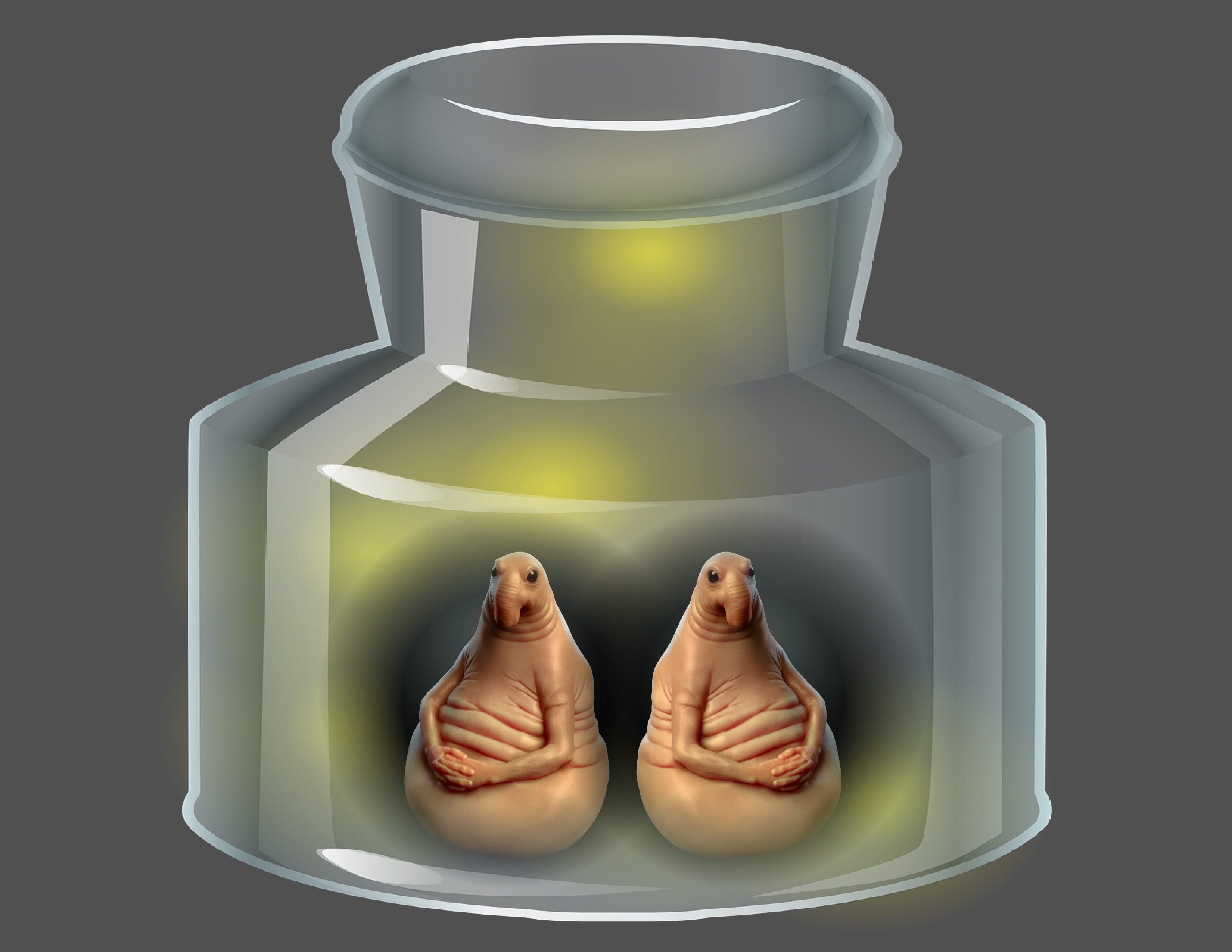 Submitted by Philosoclown on
Submitted by Philosoclown on

derivative images
My neighbor Bill seemed like an ordinary fellow until the skiing accident. He hit a tree, his head split open, and out jumped not one but two homunculi. I persuaded them not to flee and sat them down for an interview.
The homunculi reproduce as follows. At night, while a person is sleeping, a female homunculus lays one egg in each of the victim's tear ducts. The eggs hatch and minute worms wiggle into the victim's brain. As the worms grow, they consume the victim's neurons and draw resources from the victim's bloodstream. Although there are some outward changes in the victim's behavior and physiological regulation, these changes are not sufficiently serious to engender suspicion in the victim's friends; the homunculi are careful to support the victim's remaining neural structure, especially by sending out from themselves neural signals similar to what the person would have received had their brain tissue not been consumed. The victim reports no discomfort and suspects nothing amiss.
Each growing homunculus consumes one hemisphere of the brain. Shared neural structures they divide equally between themselves. They communicate by whispering in a language much like English, but twenty times as fast -- much less inter-hemispheric information transfer than in the normal human brain, of course, but as commissurotomy cases show, massive information transfer between the hemispheres is not essential to most normal human behavior. Any apparent deficits are masked by a quick stream of speech between the homunculi, and unlike hemispheric specialization in the human brain, both homunculi receive all inputs and have joint control over all outputs.
Two months later, the person is a two-seater vehicle for brother and sister homunculi. An internal screen of sorts displays the victim's visual input to both of the homunculi; through miniature speakers the homunculi hear the auditory input; tactile input is fed to them by dedicated sensors on their own limbs, etc. They control the victim's limbs and mouth by joint steering mechanisms. Each homunculus is as intelligent as a normal human being, though operating an order of magnitude more quickly due to their more efficient brains (carbon based, like ours, but operating on much different internal principles). When the homunculi disagree about what to do, they quickly negotiate compromises and deferences. When fast reactions are needed, behavior defaults to pre-negotiated compromises and deferences.
But what is it like for Bill? There is no Bill anymore, maybe, though he didn't notice his gradual disappearance. Or maybe there still is Bill, despite the radical change in his neurophysiology? How many streams of experience are there? Two? One for each homunculus but none for Bill? Or one stream only, for the two homunculi, if they are well enough integrated and fast-enough communicating? (How well and quickly integrated would they have to be to share a single stream?) Three streams? One for each homunculus plus one, still, for Bill? Two and a half? One for Bill and one and a half for the two partly-integrated homunculi? Or when counting streams of experience, must we always confine ourselves to whole numbers?
Bill always liked sushi. He never lost that preference, I think. Neither of the homunculi would want to put sushi in their own mouths, though. Bill loved his wife, the Lakers, and finding clever ways to save money on taxes. Bill can still recite Rime of the Ancient Mariner by heart, though neither of the homunculi could do it on their own. When he sees the swing in his backyard, Bill sometimes calls up a fond and vivid memory image of pushing his son on the swing, years ago. When the homunculi consumed his brain, they preserved the information in this memory image between them -- and in many others like it -- and they would draw it up on their visual imagery screen when appropriate. Characteristic remarks would then emerge from Bill, like "Maggie, do you remember how much Ethan loved to ride high on this swing? I can still picture his laughing face!" So spontaneous and natural does it seem to the well-entrenched homunculi to make such remarks, they told me, that they would lose all sense that they are acting. Maybe, indeed, they were no longer acting but really (jointly) became Bill.
I don't know why the homunculi thought I would not be alarmed upon learning all this. Maybe they thought that, as a crazy philosopher who takes literal group consciousness seriously, I'd think of the two-seater homunculus as merely an interesting implementation of good old Bill. But if so, their trust was misplaced. I snatched the homunculi, knocked them unconcious, and shoved them back inside Bill's head. I glued and stapled Bill's skull closed and consulted David Chalmers, my go-to source for bizarre scenarios involving consciousness.
None of what I said was news to Dave. He had been well aware of the homunculus infestation for some time. It had been a closely-held secret, to prevent general panic. But with the help of Christof Koch, a partial cure had just been devised, and news of the infestation was being disseminated where necessary to implement the cure.
The cure works by dissolving homunculi's own skulls and slowly fusing their brains together. Their motor outputs controlling the victim's behavior are slowly replaced by efferent neurons. Simultaneously, the remains of the homuncular bodies are slowly reabsorbed by the victim. At the end of the process, the victim's physiology is very different from what it had been before, but it is a single stream in a single brain, with no homuncular viewing screens or output controls and more or less the victim's original preferences, memories, skills, and behavior patterns.
All of this happened two years ago. Bill never knew the difference and remains happily married, though I had to tell a few white lies about his skiing accident to explain the scars.
Eric Schwitzgebel
https://schwitzsplinters.blogspot.com/2013/04/a-two-seater-homunculus.html
- 428 reads